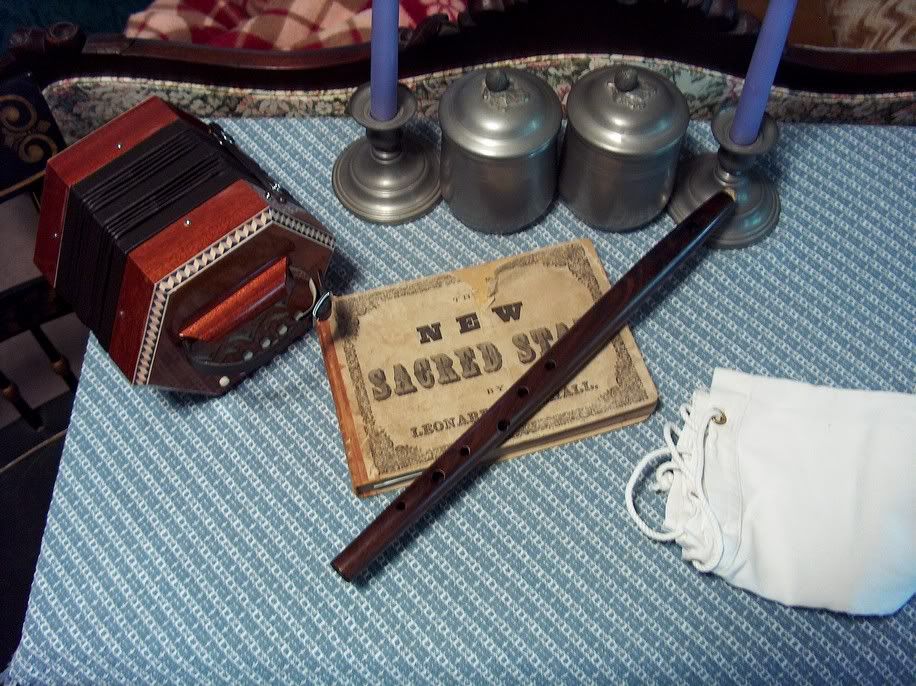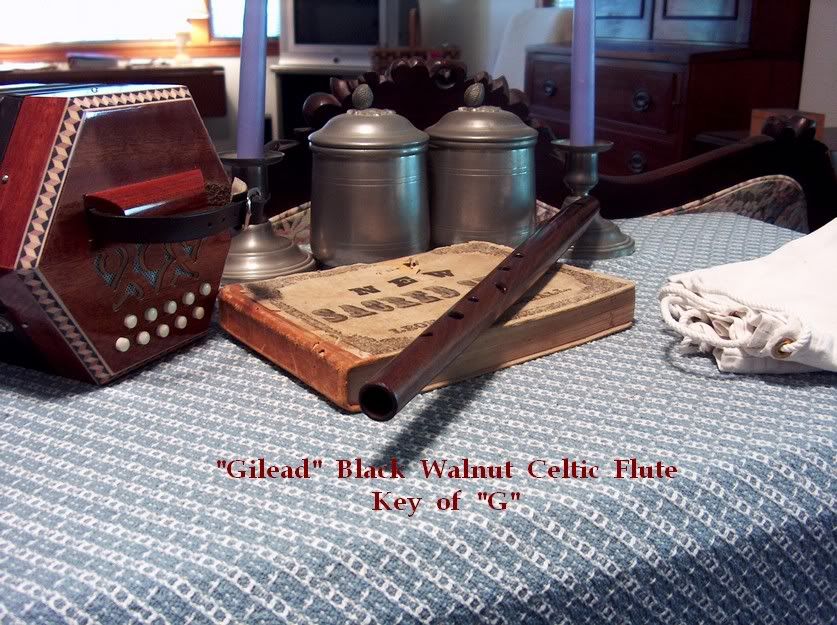I have two six-hole flutes, one in the key of G and the other is high C (I think). Their only distinguishing characteristic is that they are made of bamboo rather than wood (it should be noted, however, that they are not at all in the Asian instruments). Would they more correctly be called wooden flutes (ok, they’re made of bamboo but it’s kind of like wood) or fifes. I don’t really understand the distinction. If there is one, does it matter? I generally play (badly) irish trad music on them with the occasional fife tune thrown in.
The difference between Flute and Fife is the pitch. My view is up to G is a Flute, Ab to C is a Fife and C# to whatever is a Piccolo. So one is a Bamboo Flute the other a Bamboo Fife. That is what I would say.
There is much controversy concerning instruments in the key of G.
Are they flutes? Are they fifes?
We just don’t know. Further research is clearly needed.
I’m am currently working on a treatise that will put an end to the debate once and for all. Once published, all such G instruments will be called flufes. ![]()
Doc
NO NO NO! ![]()
Just remember a Fife is a small Flute and a Flute is a big Fife!
![]()
Jordan
Fyffer could probably answer this question better than me. However, I will throw in my two cents, for what it’s worth. I think that small flutes (Bb and higher in pitch) can be called flutes or fifes, depending on how they are intended to be played. Small flutes are made so that the first two octaves are in tune. They would be used to played jigs, reels, airs, etc. They are not designed to play much in the third octave. On the other hand, fifes are designed to play best in the second and third octaves. They are used to play the standard music for fifes.
This is my understanding of the situation, as well.
My understanding is that, at least traditionally, a fife is plain cylindrical, while a flute is conical or (later) cylindrical with a tapering head. So a Bb fife is a simple cylindrical tube used as a signalling device on the battlefield and, in conjunction with the drum, used to keep a marching column in synch. While a Bb flute was conical, and part of the military band, which used Bb, Eb and F instruments ranging from piccolo to bass. I imagine that quite often fifers also played the flute. Mr Rudall was in the Devon Militia before he came to London to take up teaching - he may well have been a fifer as well as a flute player.
Fifes (fives?) were certainly available in Bb and C, but I don’t think a wider range. (Small gap inserted here for comment from fife expert —> <—). So we don’t expect to see fifes in high or low D - that’s the piccolo or the flute respectively.
Conceivably, we could call modern bamboo, metal or plastic plain cylindrical flutes in other keys “fifes”, but the fifers might get grumpy, and they hang around people with guns and swords and cannons, so probably not a good idea. So I’d suggest we reserve the term for plain cylindrical flutes in Bb or C (or whatever else the fifers might tell us they use) and use the terms flute and piccolo for anything else.
Terry
As long as we don’t end up with a fite !
![]()
Ey! No norwegian obscenities! ![]()
cp
Talasiga, did you mean fight? ![]()
Fite, I believe translates to a woman’s private parts. ![]()
First, as mentioned a fife is a type of flute. So there should be no problem calling is a high flute or perhaps even a piccolo. Fife seems to be a way of describing a very specific type of flute much in the same way that Baroque, Irish, Modern, or Boehm is used to tell more about a flute. The descriptions above seem to give the basic concept, So no need to beat a dead horse.
The key of the fife has changed over the years originally I believe that they started out closer to the key of D, lowering to the key of C during the years of colonizing the US and finally having Bb during the Civil War. I think that construction is more important than pitch for determining whether it is a piccolo a flute or fife.
I guess My question would be why do you need to name it a flute or fife? If you are selling it on ebay, It may be best to label it a flute/fife and let the bidders decide what they think of it. Although bamboo is NOT what many would consider fife material, there are those that have heard soundtracks to movies that featured Othar Turner’s playing and his fifes were made from sugar cane which to me seems much like bamboo.
If on the other hand you just want to describe what you play to others, they will know less about fifes and flutes and it might just be easier to call it a high pitched flute. If you are talking about the fife tunes you are playing, I would see nothing wrong with referring to the High C as a fife. It is all about communication.
My organology prof, P.T.Young, desribed fifes as small flutes pitched in Bb-Db, meant to be played primarily in the second and third register (the screemin’ meemies). This definition seems to be less popular today.
Flutes in G or A are known as Third Flutes?
Interesting read if you are so inclined.
http://firstmn.phpwebhosting.com/SearchResults.php3?ID=0002&STerm=fife
I would imagine that many musicians learned the fife out of need rather than desire.
I’ve consulted the Forms.
Flute is the genus–just as cats, dogs and men are mammals,
transverse flutes, fipple flutes (recorders and whistles) are
all flutes.
It would seem to follow that fifes are flutes, as suggested in
an earlier post.
However ‘flute’ has another use, according to which it distinguishes
between transverse flutes and fipple flutes (so a recorder is not a flute),
as in ‘That’s not a flute, that’s a recorder!’
Now in this context, some people call higher pitched flutes
‘fifes’–so Ralph Sweet has a G ‘fife’ which is a flute, no question,
conical, rosewood, plays very well in the first two octaves,
for ITM.
So, according to this use a ‘fife’ is a high-pitched ‘flute,’ as opposed
to any sort of fipple flute.
However there are military fifes, which correspond to what
Terry says, and used to be what the word ‘fife’ denoted entirely.
These seem to have been mostly in Bb. They seem to have a weak
first octave and play well in third octave. This enables them to
heard above cannon fire so that they can cheer up people who
are running for their lives.
So the use of the word ‘fife’ is changing, arguably, but military fifes are the truest instances of fifes, and they are still flutes
in the genus-sense I mentioned first.
Please note: parts of this treatise were plagiarized from
The Critique of Pure Drool, by Immanuel Corkgrease
I like Jim’s post.
Let me explain it another way:-
Man or mankind includes both men and women both of which include different levels of maturity (sizes) of them who are not called men and women but boys and girls, adolescents, infants and the like. That is to say, a woman belongs to the group Man although she is not a man and if she is quite young it is wrong to call her a woman.
However, in some cultures, a 13 year old girl is considered a woman whereas in our culture (OECD) she can never be a woman at that age.
And in some cultures it is OK to call a 55year old man from another culture “boy” even though no one would dare call him that within his own culture. And so it goes …
As I said, I like Jim’s post.
Can they be heard above suicide bombers and IEDs? We could send some to Iraq so regular folks would be cheerfull enough to realize things are going well and they love their new government. ![]()
About 15 or so years ago I visited with fife maker Ed Farrary in CT. He had just made me a Bb and, while having lunch, he informed me that he was looking for someone to take over for him as he was looking to retire. After a brief tour - and I did not go into the business as I already had a career - he showed me his experimental A fife. It was a thing of beauty and he gave it to me as a gift. I didn’t (don’t) play it very much but it is still a “Fife”.
I recall Tom Madden saying tht a fife is “not a parlor instrument” and that’s the truth, pfffffft!
BillG
…

Definitely an “Outdoor Instrument”!
**Now sometimes I call my “Gilead” black walnut open - holed flute a “Tenor Fife”, but since it seems happiest down in the lower registers, I guess we’ll just call it a “flute” and be done with it.

I turned this out of an old walnut piano leg that I dug out of the dump, and it came out better than I hoped, with a wonderful sweet, resonant, mellow tone.


A few years later I tried to replicate it with intentions of selling a few, but when I put the tone holes in the exact same positions, darned if they weren’t way flat (starting with the first one, of course).
About the only major difference is the repro is mahogany. I use what I can find.
I kept opening up the holes to sharpen them to pitch, until my fingers fell through the holes instead of covering them, essentially ruining about 20 hours of work I had into it.
It almost went into the wood stove, but I kept it around, and just recently decided to have another crack at it just to see where I went wrong.
The misplaced oversized holes were plugged with epoxy paste over a waxed brass tube run up the bore as a former. Then I moved the hole centers up 5mm each and started over.
The first hole came in about 10 cents flat of “A” while still being a reasonable size; so far so good.
I leave the last fine tuning till I have the instrument finished and pretty well done.
The “B” hole ended up a whole half tone flat, so I started enlarging upwards, finally getting it in the ballpark - about twice the size of the first hole. Looks a bit odd, but I think I can save it.
The third hole I’m going to move up at least 7mm and see what happens. This is weird!
I’ve been trying to make whistles, flutes, and fifes for years now - every now and then I get a keeper, too! Hardly enough to make a living at, though!**
I have nothing to add to this thread.
What needs to be said’s been said.
Is it a flute or a fife?
Wouldn’t say on my life,
As this questions’s been beaten 'til dead.
- the Fyffer